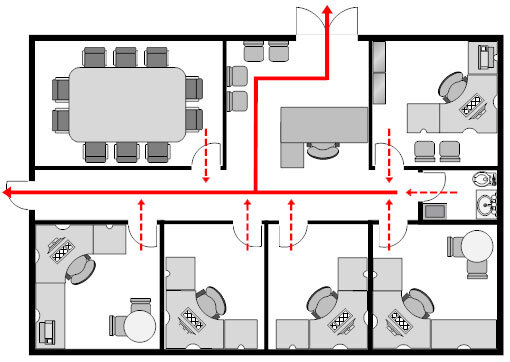Passive Fire Protection
With the 72 deaths having occurred at Grenfell Tower, West London UK, the heightened focus on Passive Fire Protection (PFP), is timely and important. In fact it is so important, it demands its own subsection in order to bring a much greater awareness the requirements involved.
Passive Fire Protection (PFP) is key component of any fire safety strategy. To keep people safe and to reduce fire and smoke damage, PFP plays a critical role. This protection comes in different forms, including:
Limited Spread — Because fire, heat, and smoke are contained in a single compartment within the area of origin, the spread is limited.
Escape Time — Escape routes are protected, thereby providing occupants with maximum escape time.
Full Protection — Both the building structure and assets are protected.
Unauthorised modification of building layouts or structures and addition of holes through fire rated walls, floors or structures, greatly reduces their effective fire resisting qualities.
The best protection is where a combination of passive fire protection is used along with active fire prevention, which includes fire extinguishers, sprinkler systems, and even fire safety education for occupants of the building.
Paths of Travel
In an emergency situation it is vital that all of your exits from your premises are clear from obstructions and operate as intended. The Building Code of Australia (BCA) includes a requirement that paths of travel, or means of egress, must be of nominated size, have sufficient clearance, be unobstructed and be free of hazards.
All exit doors within the path of travel must be maintained in accordance with the BCA, Australian Standards and be in correct working order. Exit doors must also be of a certain design, including having a single method of operation via a downward movement of the hand without use of a key.
Every building must have its Path of Travel annually checked at a minimum.
Fire and Smoke Doors
Fire doors are complex devices with many attributes and well-thought out designs to help protect, not only the occupants, but the buildings structure from further fire damage.
You are probably unaware of the many parts that go into making a fire door work. Door structure, hardware, seals and signage to name a few. Their exposure to both user abuse or weather elements, means there is a higher chance for those parts deteriorating over time, hence rendering a fire door ineffective and non-compliant with fire codes.
To guarantee that every part of a fire door is properly working and fit for duty during an emergency, Extreme Fire Solution have qualified trades people that both test, inspect and repair to ensure compliance.
Passive Fire Protection (PFP)
To the untrained eye, Passive Fire Protection is not immediately noticeable, nor important. However, PFP systems are silent guardians that, in the event of a fire emergency, greatly improve the odds of survival of a buildings occupants and minimise the overall damage that fire can do.
Common PFP examples include -
Fire-resistance rated walls, ceilings, floors and ducts
Firewalls designed to serve as a barrier
Fire-resistant glass or Fire attenuation screens
Fire-protective wardrobe or boxes
Closures (fire dampers) used in HVAC systems
Firestops (fire collars, pillows, sealant)
Fire rated cable coating
Spray on fire-resistant epoxy subliming and intumescent coatings
Fireproofing cladding
Enclosures (power boxes)




